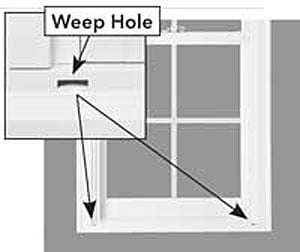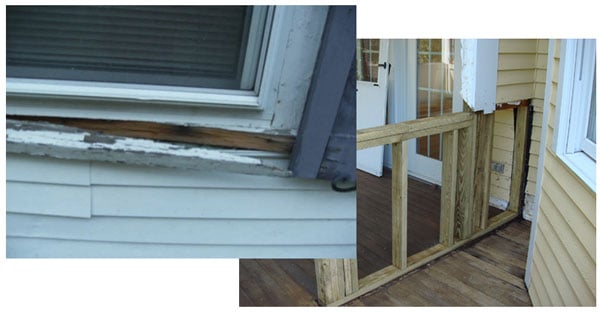
A weep hole might seem like an unusual word to use when describing an important concept in home construction, but it's worth understanding or you might cause a problem without realizing what you're doing. Found at the bottom of various objects, a weep hole (also called weep slots or weep brick) is a small opening included to allow water to drain out from a cavity between a home's exterior and an internal wall or object.
Weep holes are most common at the bottom of windows, typically found on both sides as shown here. For example, your windows are open and it starts to rain so water gets inside your home. You close the windows but some water remains trapped on the inside. Without a weep hole, this water if it didn't evaporate quickly, might cause wood rot. See Pella.com's advice on cleaning windows and keeping weep holes open.

Weep Holes in Home Construction
In addition to windows, you will find weep holes in other parts of a house, including:
- Bottom of windows so water doesn't pool when you forget to close windows tightly.
- Curtain walls where the outer wall of a building is used to keep the elements, covering up a structural wall behind it. For example, when houses have brick or stone exteriors, there should be weep holes at the bottom of these walls.
- Retaining walls to allow water to escape from the earth behind the wall, You usually see these in the form of plastic, metal or clay pipes extending through the wall.
- Decks and sunrooms should have weep holes when tied into a house, to avoid settling that causes water to pool where the new deck meets the house. Not a common practice but a lesson learned from my handyman business, where water damage required extensive repairs.
Note: Some windows also have flaps over weep holes, to keep the bugs out.
Repairs if Weep Holes are Missing or Clogged
Wood rot repairs are one of the top 10 projects for my handyman business. Here are photos showing you why you want to pay attention to the weep holes in your windows, and elsewhere around your home. You shouldn't panic, but you should inspect your home annually to find and repair problems quickly before the wood rot becomes this bad.




